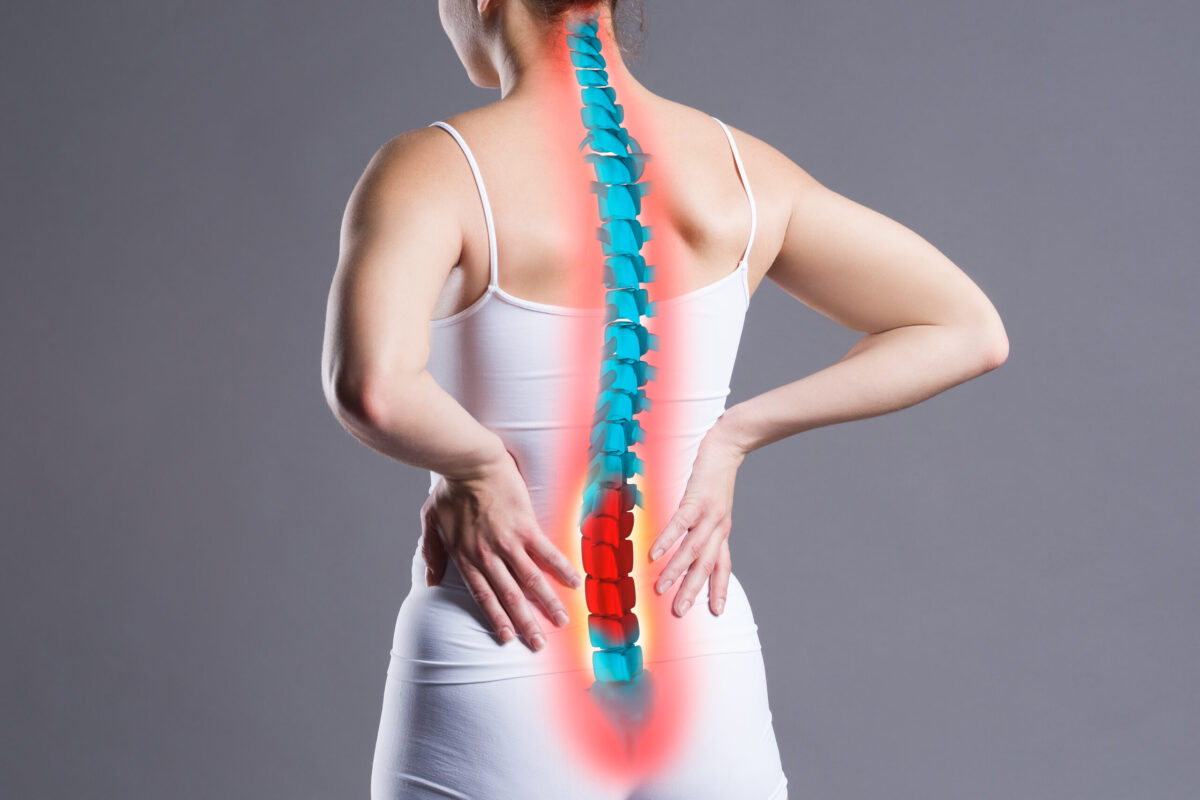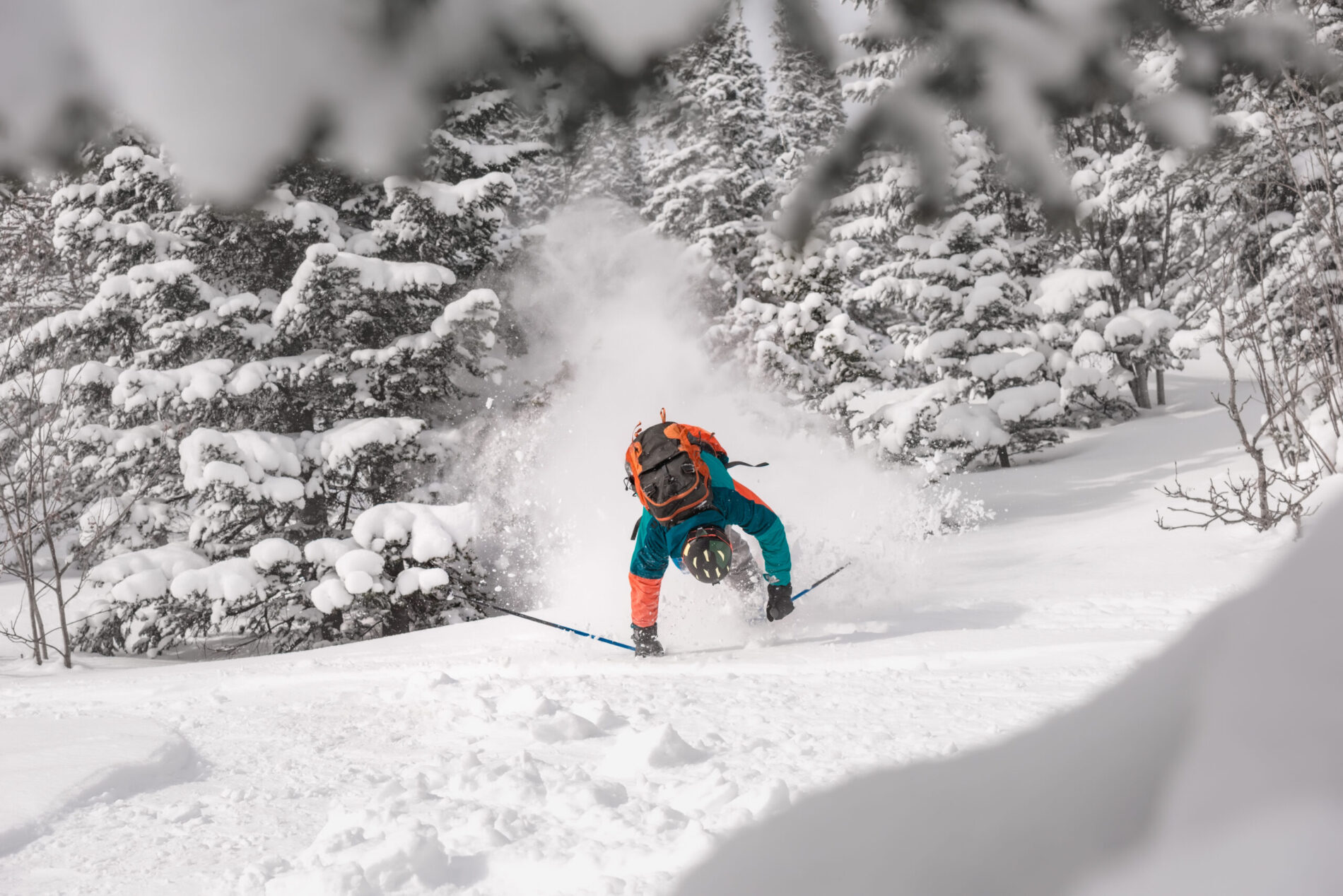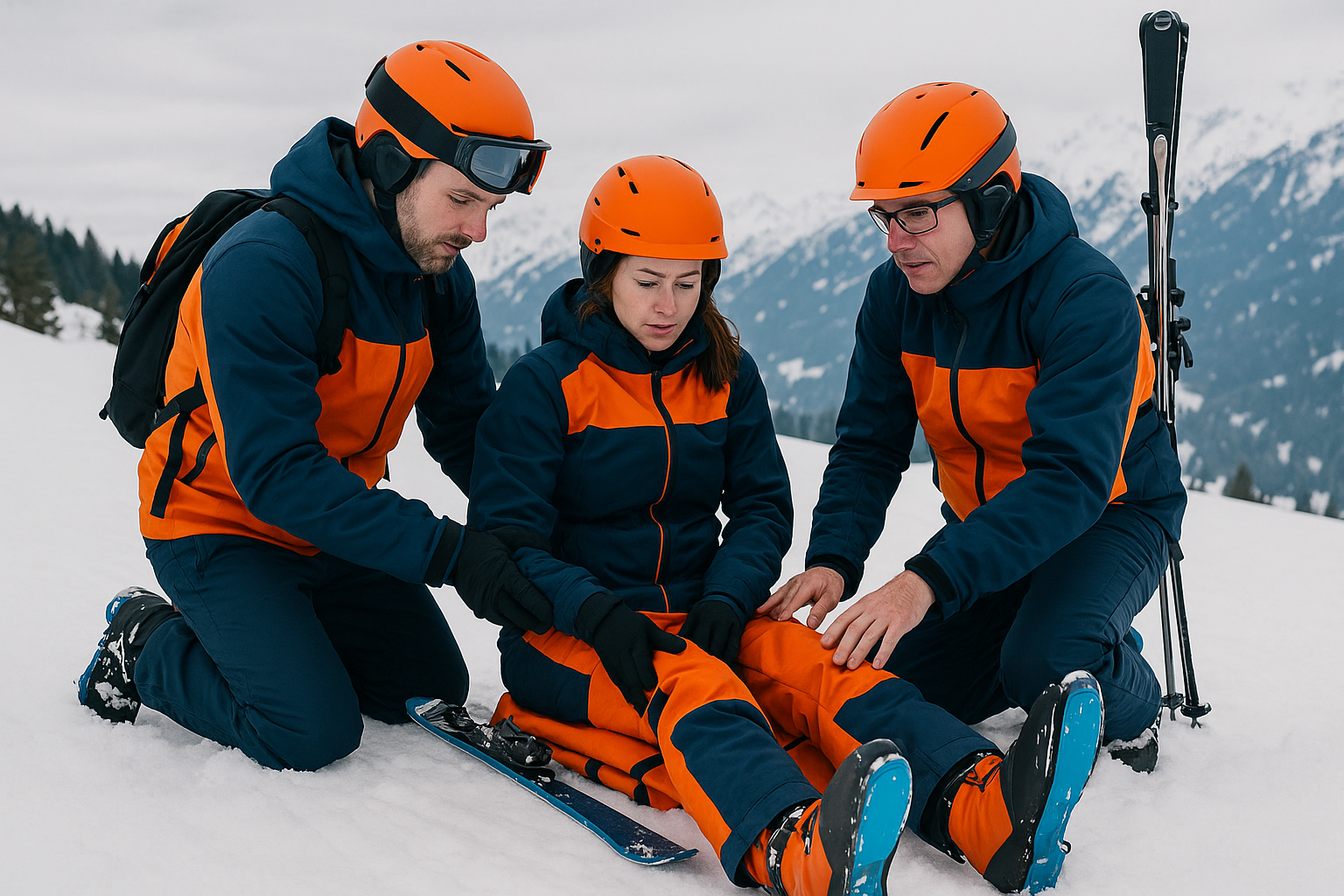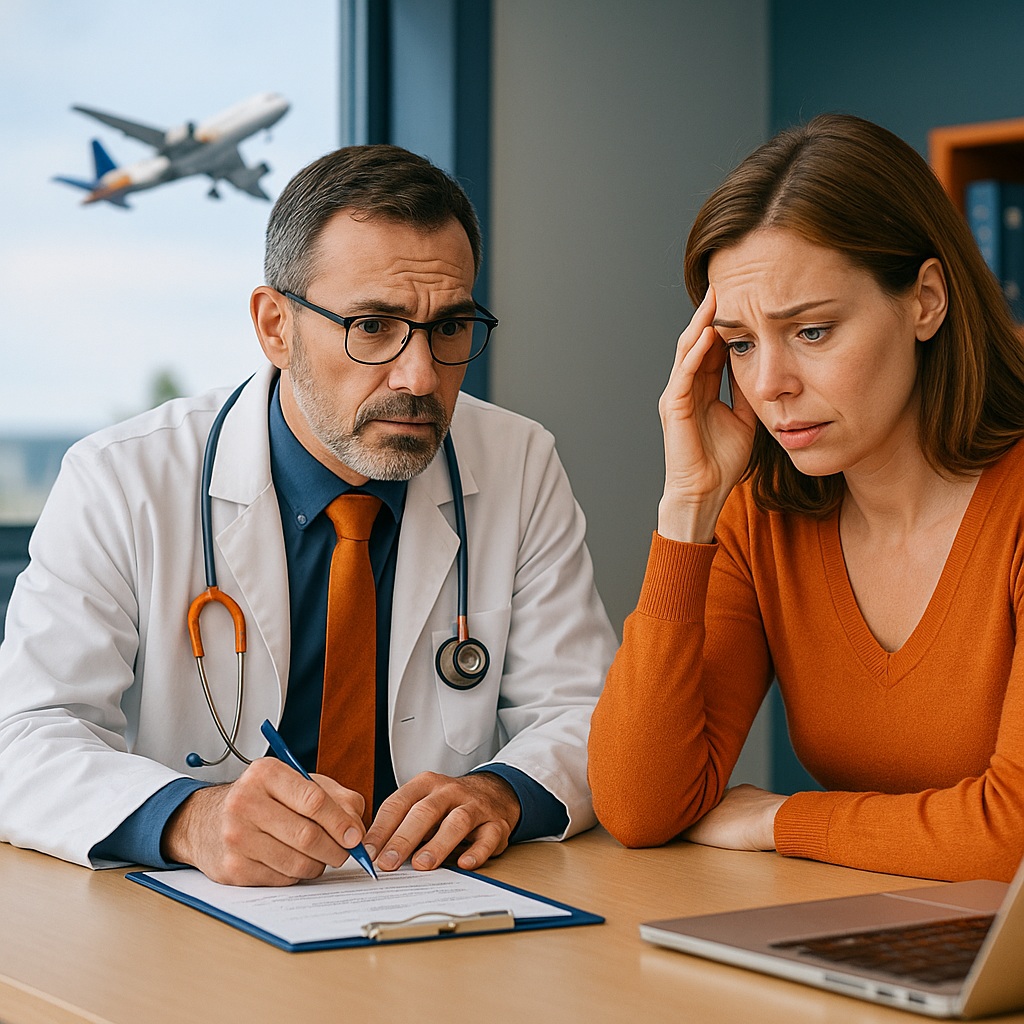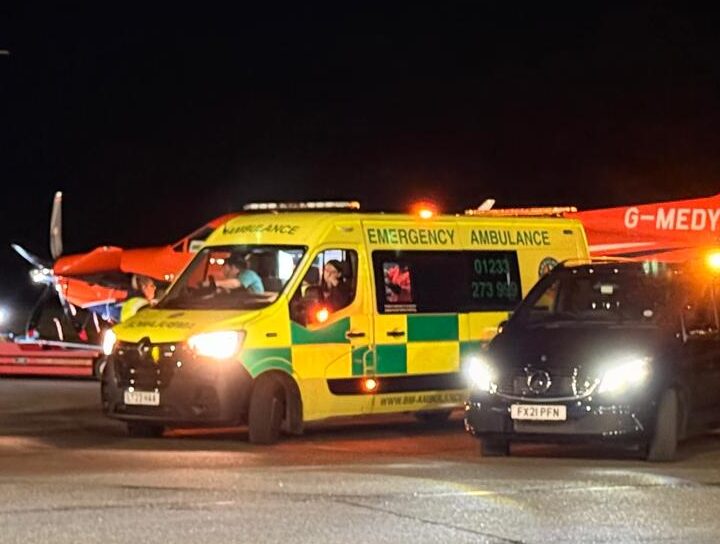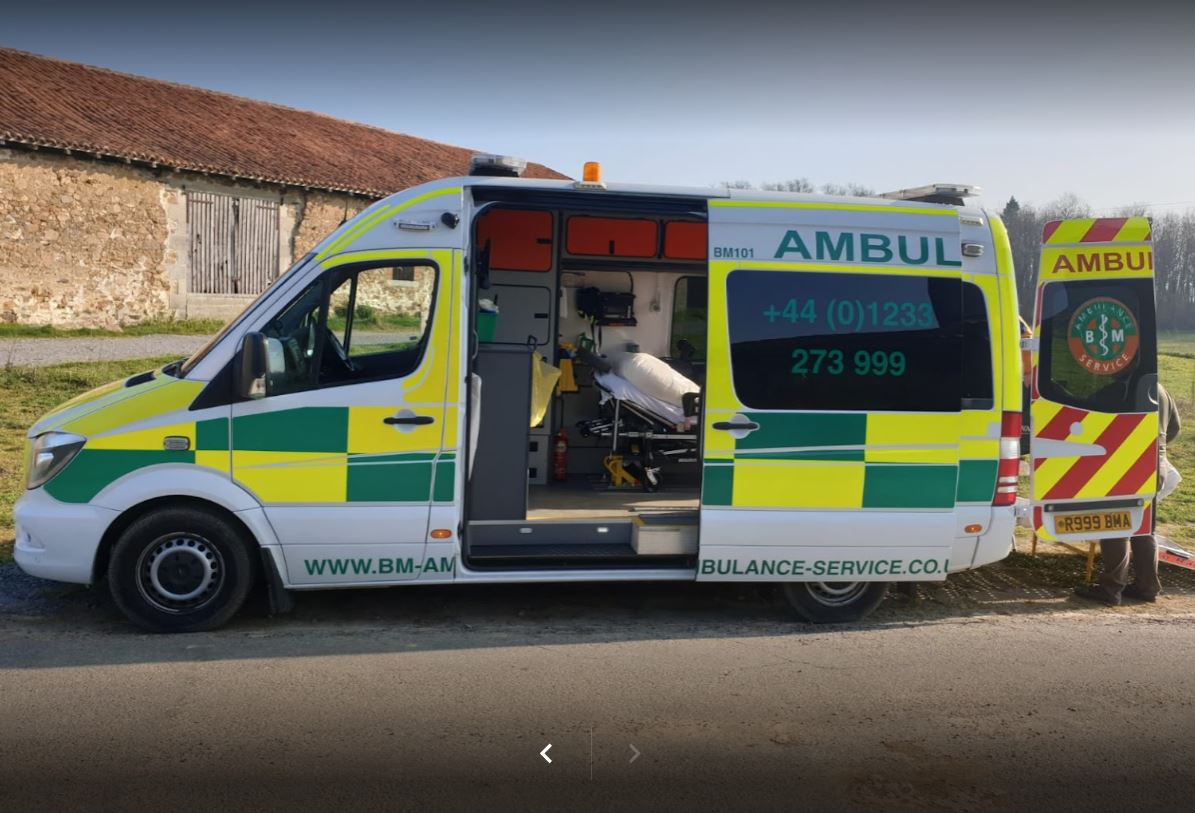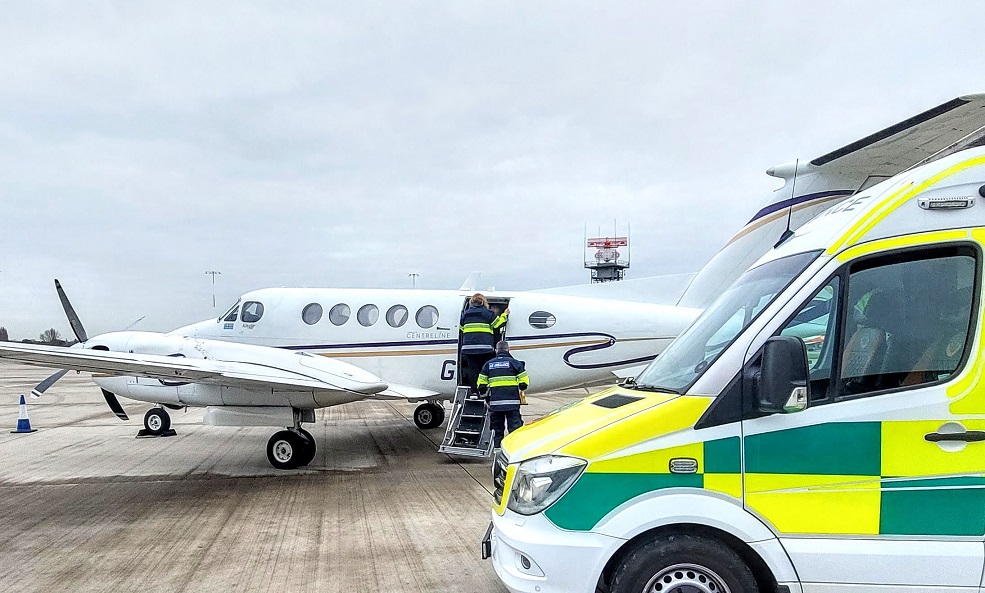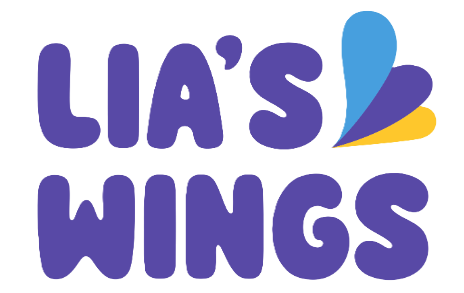Injured on the Slopes? Get Trusted UK Medical Advice, Fast
British-Led Help After Ski & Snowboard Accidents
Expert Ski Injury Medical Advice & Repatriation Help
Whether you’re sitting in a ski clinic, waiting for an X-ray, or frantically Googling after a nasty fall — this is the page you’ve been looking for. We provide straight-talking, UK-led medical guidance for common ski injuries, backed by NHS-aligned knowledge and real-world repatriation experience. From ACL tears to concussions, we help injured skiers and snowboarders understand their treatment options, prepare for recovery, and get safely back home when needed.
Our clinical advice is trusted by families, insurers, and international hospitals — and everything is written in plain English, not medical mumbo-jumbo.
Ski Injury Recovery Support & Treatment Guidance
Injured while skiing or snowboarding abroad? Our medical advice articles are written with UK clinical standards in mind, providing honest, step-by-step guidance based on real cases and NHS-backed principles. Whether you’ve fractured your wrist, torn a ligament, or just need help understanding what’s next — we’ve got you.
How we can get you home?
Many of our urgent medical repatriations begin in alpine ski resorts, where British skiers and snowboarders may suffer injuries like broken bones, head trauma, or altitude sickness. SkyCare provides fast, safe medical transport from the mountainside to home, including private air ambulances, commercial flight escorts, and ground medevac transfers from ski clinics, mountain hospitals, and even hotel rooms. Whether you're in the French Alps, the Dolomites, or halfway down a black run in Banff, our experienced, bilingual team coordinates the entire journey, from snow-covered stretcher to safe arrival back in the UK. Trusted by families, insurers, and international hospitals, we specialise in complex winter repatriations when time and terrain are against you.

Private Air Ambulance
SkyCare arranges urgent air ambulance repatriation from ski resorts to the UK and across Europe. Whether a patient is in a mountain clinic, a private chalet, or recovering in a public hospital after an accident on the slopes, our ICU-equipped aircraft and experienced medevac crews provide safe, bedside-to-bedside care.
We operate rapidly from key alpine hubs and support major winter destinations — including ski resorts with high injury rates, busy trauma wards, and remote locations where snow and altitude complicate recovery.
Our medical teams handle every detail — from medical clearances and airfield permissions to coordinating with receiving hospitals back in the UK.
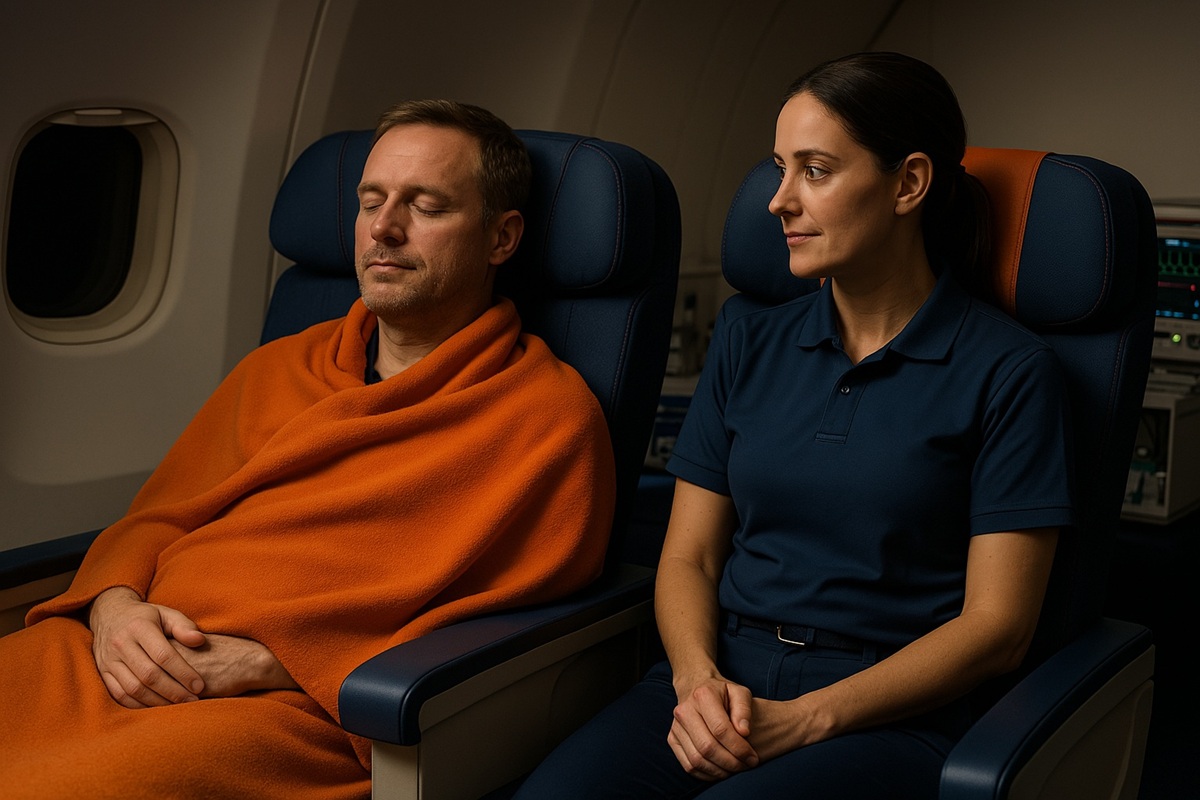
Commercial Medical Escort
For stable patients recovering from ski or snowboarding injuries who are fit to fly, our commercial medical escort service offers a safe, cost-effective alternative to private air ambulance flights. A SkyCare doctor or nurse accompanies the patient from chalet or clinic to their final destination, providing professional care and reassurance throughout the journey.
We arrange departures from major alpine airports, working directly with airlines, airport teams, and receiving hospitals. This service is ideal for medical repatriation to the UK or Europe from popular ski regions where patients are stable but still require medical support to travel.

Commercial Stretcher Flight
For patients who can't sit upright, commercial stretcher flights offer a cost-effective alternative to private air ambulances. We convert a row of seats into a lay-flat stretcher with privacy screens and oxygen if needed.
A SkyCare medic provides in-flight care, and we handle all airline clearances and logistics. Ideal for stable patients needing to lie flat due to injury or surgery.
This service is only available on select airlines and takes extra time to arrange — but offers significant savings for long-haul repatriation after ski injuries.
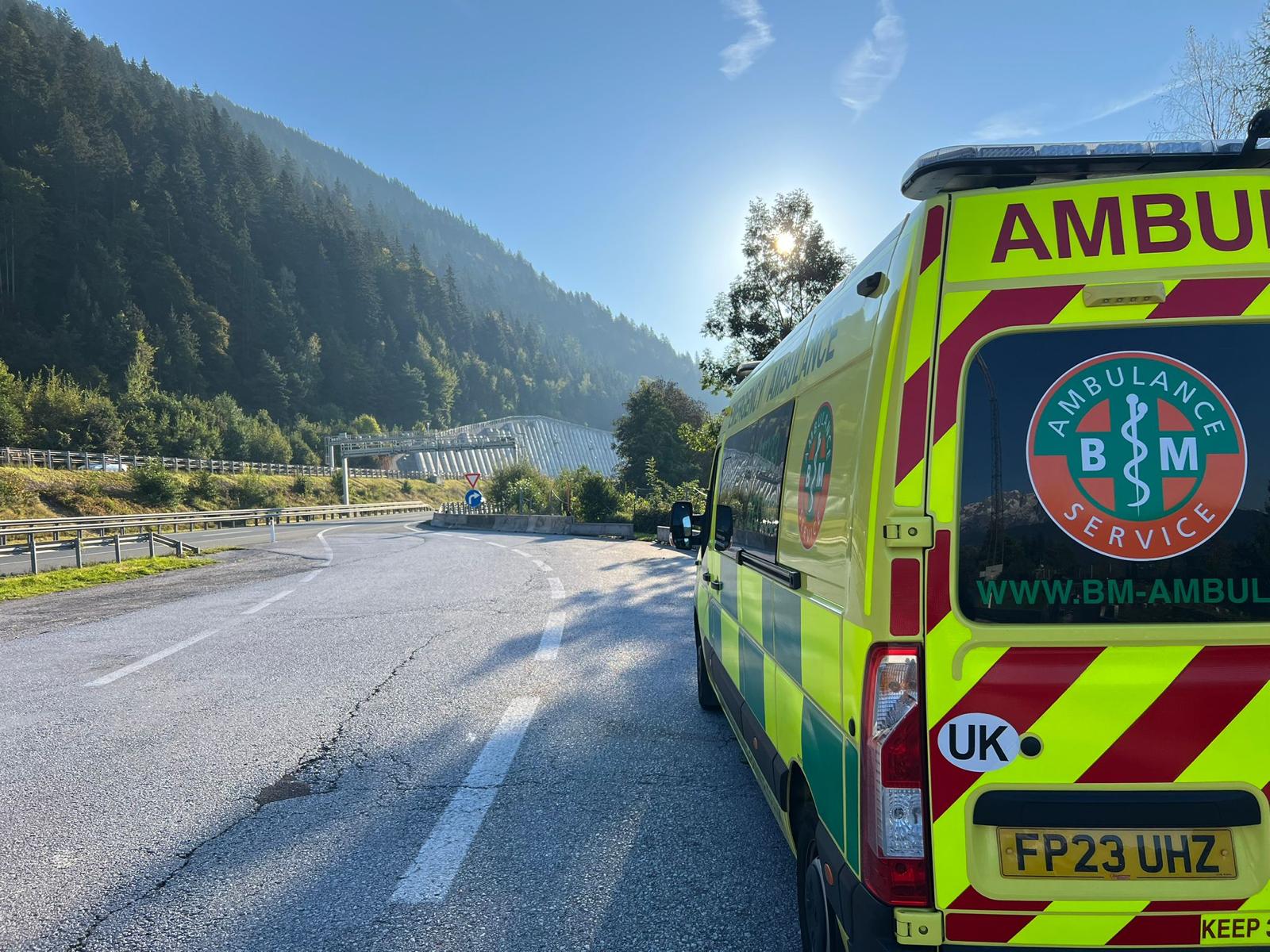
Road Ambulance Repatriation
SkyCare provides fully equipped ground ambulance repatriation from European ski resorts, offering a safe alternative to air travel for stable patients needing to return to the UK by road.
Our ambulances collect from clinics, hospitals, alpine resorts, and private chalets, with experienced paramedics on board to provide continuous medical care throughout the journey home.
This service is ideal for patients who are fit to travel long distances but still require monitoring, medication, or mobility support — especially when weather or medical advice makes flying inadvisable.
Medical Advice for Ski Injuries and Transport
Discover practical advice for travelling after a ski injury — from flying with a broken leg or brain bleed to understanding airline policies, fit-to-fly rules, and repatriation logistics. These articles support injured skiers and their families with clear, expert guidance on getting home safely.
How We Help
From hospital coordination to specialist medical flights, SkyCare ensures a smooth, safe return home after a skiing injury.
If you or a loved one has been injured while skiing or snowboarding, and are now recovering in a hospital abroad, our expert team steps in to coordinate your safe return to the UK. We handle every part of the medical repatriation process with speed, discretion, and experience — especially during the busy winter months.
1. Direct Contact with Treating Doctors
Our team liaises directly with the hospital or clinic where the patient is being treated. We obtain full medical reports and assess whether a medical escort or air ambulance is needed. This removes stress for families and avoids delays.
2. Fit-to-Fly Assessment & Documentation
We arrange formal fit-to-fly clearance, required by airlines for passengers with recent injuries, fractures, or surgery. This ensures safety and compliance with both medical and airline protocols.
3. Air Ambulance or Medical Escort Flights
Depending on the patient’s condition, we provide either a dedicated air ambulance or a commercial flight with medical escort. Our aircraft are equipped for winter conditions, including snow and ice, and include full in-flight medical care when needed.
4. Ground Ambulance on Arrival
On arrival in the UK, we arrange direct ambulance transfer from the aircraft to hospital or home. We ensure continuity of care, without the need to navigate busy terminals or public transport.
SkyCare works with private individuals, insurers, and hospitals to provide a seamless, medically-managed journey home. Our clients include older travellers, families, and individuals recovering from orthopaedic injuries, spinal surgery, or serious fractures.
Wherever you are in Europe or beyond — we’re here to bring you home, safely and without delay.
What If I Don’t Have Insurance?
Not insured? Don’t panic. Being injured on the slopes and abroad without a travel or medical evacuation policy can feel like you’ve hit a black‑diamond run without your skis — but there are options, and we’ll help you explore them.
Although many travellers assume their insurer will automatically arrange a specialist flight home, the reality is more complicated. For example, many travel insurance policies exclude or limit what they will cover when it comes to medical repatriation or air ambulances. We’ve explained more about that here.
Here’s how you can still proceed even without insurance cover:
- Ask for a no‑obligation assessment — Let us take a look at your medical reports and location, then we’ll advise you on what type of transport makes sense (commercial medical escort, ground transfer within Europe or air ambulance). Learn how we help when insurance won’t cover medical repatriation.
- Consider cost‑effective alternatives — If you are stable and within Europe, a commercial medical escort or a dedicated ground ambulance can be much more affordable than a full air ambulance flight. Read more about your options here.
- We may be able to help in exceptional cases — When families truly have no access to funding and the need is urgent, we’ve supported some pro bono repatriation cases where possible. These are limited but assessed fairly.
- Reach out to us early — If you’re stuck abroad, we’re available 24/7 to discuss your repatriation options, document your case, and help pull together what you’ll need. Start here if you’re uninsured and unsure what’s next.
Even when insurance won’t cover repatriation, it doesn’t mean you’re stranded. Our team helps people in exactly that situation — we provide transparent quotes, coordinate the transport, and guide you through the process from hospital to home.
So if you find yourself injured in the mountains and unsure how to get back to the UK, reach out to us. You may be surprised how many paths there are to safe repatriation — you just need someone familiar with them.
SkyCare – support when travel insurance doesn’t cover the journey home.
European Ski Resorts We Cover
Rest of the world Ski Resorts We Cover
From world-renowned resorts to emerging mountain areas — our coverage spans the length and breadth of Europe’s ski regions.
France
|
Switzerland
|
Spain
|
If you’re skiing or snowboarding in Europe and don’t see your resort listed above, please get in touch — we’ve likely operated in your location and can confirm coverage within minutes.From world-renowned resorts to emerging mountain areas — our coverage spans the length and breadth of Europe’s ski regions.
Rest of the World Ski Resorts We Cover
Most Popular Ski Resorts – Worldwide Coverage
From Aspen to Niseko, our teams repatriate patients from the busiest and most prestigious ski resorts across North America and Asia.
USA
|
Canada
|
Japan
|
China
|
If your resort isn’t listed here, get in touch — we cover a huge number of additional destinations across North America and Asia.
Ski Injury Treatment Advice & Recovery FAQs
Treatment After an ACL or Knee Injury While Skiing
Immediate Knee Injury Care
If you’ve injured your knee while skiing, early treatment is key to reducing swelling, controlling pain, and setting yourself up for a faster recovery. Once a proper diagnosis has been made by medical staff, these essential first steps can support the healing process:
- Rest: Keep your weight off the injured leg as much as possible. Even walking on a damaged ACL or meniscus can make things worse.
- Ice: Apply cold packs every couple of hours for 15–20 minutes at a time during the first few days. This helps reduce inflammation.**
- Compression: Use a supportive bandage or elastic wrap to minimise swelling and add stability.
- Elevation: Prop your leg up above heart level when resting — use cushions or a folded duvet. It helps drain fluid and eases pressure.
Rebuilding Strength: Rehab After a Ski Knee Injury
Treatment typically begins with physiotherapy, not surgery. A physio will guide you through exercises to restore your knee’s movement, reduce stiffness, and build strength. You may be given crutches to avoid bearing weight, and sometimes a brace to keep the joint stable while healing.
This stage is crucial — especially for recreational skiers or those who don’t want (or need) surgery. Many regain function fully through rehabilitation alone, particularly if their sport doesn’t involve pivoting or impact.
Surgical Options: When the ACL Needs Repair
Surgery may be considered if:
- You’re an athlete and want to return to high-impact sports
- Your knee gives way or “buckles” during everyday movement
- You’ve injured more than one ligament or the meniscus
In ACL reconstruction, the surgeon replaces the torn ligament with a tendon graft — either from another part of your leg or from a donor. This new graft acts like a scaffold to restore knee function over time.
After surgery, you’ll begin a second, more focused phase of physiotherapy. This is where progress is made — and lost, if not done properly.
How Long Until I Can Ski Again?
There’s no quick fix. It typically takes 9–12 months (sometimes longer) to safely return to sport after an ACL reconstruction. Even then, research shows around one-third of athletes suffer another ACL tear within two years — often due to poor rehab or returning too soon.
Your medical team will monitor your strength, flexibility, and movement control to decide when it’s safe to get back on the slopes. The goal is not just to return — but to stay injury-free.
**The R.I.C.E. method (Rest, Ice, Compression, Elevation) has long been a standard first-aid approach for soft tissue injuries. However, modern medical guidance is shifting toward a more refined strategy — prioritising early, controlled movement and careful load management over prolonged rest or excessive icing. Always follow the specific advice of your treating clinician, as protocols may vary based on your individual injury and recovery goals.
Snowboarders are particularly prone to wrist and forearm fractures due to forward falls — especially on their first day, when balance and technique aren’t quite there yet. These injuries can range from mild sprains to serious fractures requiring immobilisation or even surgery.
If you suspect a wrist injury, seek prompt medical attention. You’ll likely need an X-ray to confirm the damage and rule out complications.
Seek urgent medical advice if:
- The wrist is extremely painful or too sore to use
- There’s noticeable swelling or bruising that continues to worsen
- You experience stiffness or struggle to move the wrist or fingers
- You develop a high temperature, or feel hot and shivery — signs of possible infection
Go to hospital or call emergency services if:
- The wrist is numb, tingling, or has pins and needles
- You have a deep cut with heavy bleeding
- A bone is visible or protruding through the skin
- Your wrist or forearm looks deformed or bent at an unnatural angle
Until you receive medical care, here’s what you can do:
- Support the injured arm with a towel or makeshift sling
- Apply an ice pack (wrapped in a cloth) to reduce swelling — up to 20 minutes every 2–3 hours
- Control bleeding with firm pressure using a clean pad or dressing
- Remove rings, watches, or bracelets before swelling increases
- Take pain relief such as paracetamol or apply ibuprofen gel (or take ibuprofen tablets if appropriate)
For further medical information, see the NHS guide on wrist and arm injuries.
If your shoulder looks deformed, is extremely painful, or you can’t move your arm — it could be dislocated or fractured. Don’t attempt to put it back in yourself. Seek emergency care immediately.
While waiting for help:
- Support the injured arm with a sling or towel
- Apply a cold pack (wrapped in a cloth) to reduce swelling and pain
- Avoid moving the shoulder or touching any exposed bone
- Take paracetamol if needed — always follow dosage guidance
What treatment involves:
- An X-ray to confirm the injury
- A sling to immobilise the joint
- Pain management
- Physiotherapy to restore strength and movement
Recovery times:
- Shoulder dislocation: Usually 12 weeks or more with physiotherapy
- Broken collarbone: 6–8 weeks, sometimes longer if surgery is needed
Important: Do not return to skiing or sports without medical clearance — the risk of re-injury is high if recovery is rushed.
For more detailed advice, visit the
NHS Dislocated Shoulder Guide or the
NHS Broken Collarbone Page.
Head injuries can be serious — especially if there’s any loss of consciousness, confusion, or signs of concussion. Always err on the side of caution and seek urgent medical care if you’re unsure.
Go to A&E immediately if:
- You’ve been knocked out, even briefly
- You have a persistent headache, vomiting, or memory loss
- You notice changes in behaviour, balance, or vision
- There’s bleeding, clear fluid from the nose or ears, or a visible dent in the skull
Call an ambulance if someone:
- Is unconscious and won’t wake up
- Has a seizure, serious confusion, or can’t stay awake
- Fell from a height or suffered a high-speed impact (e.g. crash)
For minor head injuries:
- Apply a cold pack to reduce swelling
- Rest and avoid screens, stress, and alcohol
- Take paracetamol for any pain (avoid stronger meds unless advised)
- Have someone stay with you for the first 24 hours
Avoid driving, sports, or strenuous activity for at least 3 weeks.
Symptoms like headache, dizziness, or feeling dazed may last up to 2 weeks.
For more information, visit the
NHS Head Injury and Concussion Guide.
Falls, jumps, or high-speed crashes while skiing or snowboarding can result in serious spinal injuries. In the worst cases, these accidents can lead to spinal cord injury (SCI) — where nerve signals from the brain are disrupted, sometimes permanently. This can cause numbness, paralysis, or loss of bladder and bowel control below the injury level.
Causes of spinal injury while skiing:
- Falling from height (e.g. ski lifts, jumps, or terrain parks)
- Hard impacts during off-piste or icy descents
- Collisions with trees, barriers, or other skiers
- Sudden deceleration (e.g. after losing control or hitting a rock)
- Landing awkwardly during jumps
Warning signs of spinal trauma:
- Severe pain in the neck or back
- Weak or paralysed limbs
- Numbness or tingling in hands, feet, or legs
- Loss of sensation below the injury point
- Difficulty breathing
- Loss of bladder or bowel control
- Visible deformity of the spine
What to do if they are conscious:
- Reassure them and tell them not to move
- Call for an ambulance or ask someone else to do so
- Do not move them unless they’re in immediate danger (e.g. avalanche risk)
- Stabilise the head and neck in a straight line — kneel behind their head, hold each side gently but firmly, and do not tilt
- If possible, ask someone to pad either side of the head with rolled towels or clothing for support
- Stay with them and monitor breathing and consciousness until help arrives
If they are unresponsive:
- Do not move them unless it’s unsafe to leave them where they are
- Call for an ambulance immediately or ask someone to do so
- Support their head and neck as described above — keeping everything aligned
- Open their airway using the jaw-thrust technique (not head-tilt)
- Check breathing for 10 seconds
- If breathing: maintain airway position and continue to monitor
- If not breathing: start CPR and ask someone to locate a defibrillator (AED)
Spinal injuries are rare, but time-critical. Quick thinking, no movement, and proper airway control can protect the spinal cord from further damage until emergency services arrive.
Hip and pelvic fractures are more common in older skiers due to reduced bone strength and impact from falls. These are serious injuries that require urgent medical attention — and often result in hospitalisation or medical repatriation.
Signs of a Hip or Pelvic Fracture:
- Severe pain in the hip, groin, or upper leg after a fall
- Swelling or bruising in the hip or thigh area
- Inability to stand or put weight on the affected leg
- Shortened or outward-angled leg compared to the other side
- Tingling or numbness in the leg
What to Do:
- Call for an ambulance — this injury requires hospital treatment immediately
- Do not attempt to move the person unless they are in immediate danger
- Keep them warm and calm while you wait for medical help
- Support the injured leg with cushions or rolled clothing if possible — but do not attempt to straighten or reposition it
Hospital Treatment & Recovery:
- An X-ray or scan will confirm the break and determine treatment
- Surgery is almost always required — to fix the bone or replace part of the joint
- Recovery can take several weeks or months, with physiotherapy starting soon after surgery
- Some patients may need walking aids, in-home support, or ongoing rehab
Older travellers, or those with conditions like osteoporosis, may be more at risk — and may not regain full strength or mobility post-injury. This is why comprehensive winter sports insurance and medical planning are so important.
For more details, visit the
NHS Broken Hip Advice Page.
Lower leg fractures — especially breaks to the tibia or fibula — are common in skiing and snowboarding, particularly after high-impact falls or when ski bindings fail to release properly. These injuries often require surgery, external fixation, and medical repatriation to continue treatment at home.
Signs of a Broken Tibia or Fibula:
- Severe pain in the lower leg
- Swelling, bruising, or visible deformity
- Inability to walk or put weight on the leg
- The leg appears twisted, shorter, or angled abnormally
- Bone protruding through the skin (in open fractures)
What to Do While Awaiting Medical Help:
- Do not try to stand or walk on the injured leg
- Keep the leg supported and as still as possible using soft padding (jacket, blanket, clothing)
- Apply gentle pressure to stop any bleeding with a clean cloth or dressing
- Use paracetamol for pain (unless told otherwise)
- Avoid eating or drinking in case surgery is required
Hospital Treatment & Recovery:
- An X-ray will confirm the fracture and whether surgery is needed
- Stabilisation may involve a cast, intramedullary rods, plates or external fixation
- Severe or complex fractures may require air ambulance transport or stretcher flight
- Full healing can take 6–12 weeks, with physiotherapy often lasting several months
Aftercare & Rehabilitation Tips:
- Keep the leg elevated to reduce swelling
- Wiggle your toes to maintain circulation and reduce stiffness
- Don’t scratch under your cast or get it wet
- Follow all advice from your doctor or fracture clinic
If you’re recovering and experience increased pain, numbness, swelling, or signs of infection — seek medical advice immediately.
For full NHS guidance, visit the Broken Leg Advice Page.
Skier’s Thumb — also called Gamekeeper’s Thumb — is a common ligament injury caused by falling onto an outstretched thumb, often while gripping a ski pole. The ulnar collateral ligament (UCL), which stabilises the base of the thumb during gripping or pinching, becomes stretched or torn.
Typical Symptoms:
- Swelling and bruising at the base of the thumb
- Sharp pain when gripping or pinching
- Reduced thumb strength or instability
When to Seek Medical Advice:
- If you can’t grip objects or feel weakness in the thumb
- If the thumb is visibly swollen, bruised, or painful to move
- After a ski fall with your pole in hand — especially if landing on your hand or wrist
Diagnosis:
A doctor may examine your thumb or order an X-ray or ultrasound. In some cases, a small fracture or complete ligament tear (such as a Stener lesion) may be identified, which affects treatment decisions.
Treatment Options:
- Partial Tear: Thumb splint or cast for 6 weeks followed by hand therapy
- Complete Tear: Surgical repair, then splinting and a rehabilitation programme
Recovery & Outcome:
Most patients make a full recovery. However, some may experience ongoing weakness or instability if the ligament doesn’t heal fully. In rare cases, further surgery may be needed to stabilise the joint or reconstruct the ligament.
Supportive splints may be recommended for return to skiing or physical activity after healing. Always follow advice from your treating surgeon or hand therapist.
Ski Injury & Repatriation FAQs: What Every Traveller Should Know
Does travel insurance cover ski accidents abroad?
Yes — but not always in the way people expect. While most travel insurance policies do include some winter sports cover, the details matter. If you’re injured skiing abroad, your insurer may cover basic hospital care and return travel — but only if specific conditions are met. These often include:
- You were skiing on-piste (not off-piste unless with a guide)
- You wore appropriate safety equipment
- You declared pre-existing medical conditions
- You didn’t consume alcohol before the accident
Even with valid cover, insurers don’t always arrange repatriation immediately — especially for non-urgent cases, spinal injuries, or surgery delays abroad. This can leave families waiting days or even weeks to bring a loved one home. In many cases, patients or relatives choose to fund their own return and seek reimbursement later.
We explore this in more detail in our guide to medical repatriation costs, where we explain the difference between insurance-led flights and private arrangements — including stretcher flights, ICU transfers, and doctor-led commercial medical escorts.
We also break down common problems in our article on air ambulance insurance coverage, including policy exclusions and what to check before you travel. If your insurer is slow or declines to fund a flight, SkyCare can step in to arrange transport and provide paperwork to help you recover costs later.
Unfortunately, not everyone has insurance. In exceptional cases — especially involving children or critical trauma — our team can support families through charities, embassy coordination, or pro-bono repatriation assistance. While we don’t offer free flights, we do help families access the fastest and safest options available.
In short: travel insurance can cover ski accidents abroad — but delays, exclusions, and poor communication are common. SkyCare helps patients return home when time, safety, and medical needs come first.
Getting injured while skiing abroad without travel insurance can create serious medical and financial difficulties. If you’re hospitalised, you may be required to pay for treatment upfront — including ambulance transport, diagnostics, surgery, and even overnight stays. In countries without reciprocal healthcare agreements, these costs can quickly exceed thousands of pounds.
Even more challenging is getting home. Without insurance, air ambulance flights, stretcher arrangements, or medical escorts must be self-funded. Repatriation costs from Europe typically range from £10,000 to £25,000+ depending on location, medical condition, and flight type. We explain this in detail in our article on pro-bono medical repatriation.
At SkyCare, we understand that not every injured traveller has the resources to fund emergency transport on their own. While we are not a charity and cannot offer free flights as standard, we do provide guidance on potential pathways — including:
- Working with registered charities (especially for children or vulnerable patients)
- Supporting fundraising efforts by supplying medical documentation and costed quotes
- Liaising with embassies, consulates, or social services for urgent coordination
We also offer payment plans in select cases, and may help families with fast-track advice to avoid costly delays. Our goal is always the same: getting the patient home safely, with dignity and medical oversight — regardless of their situation.
If you or a loved one is stranded after a ski injury and uninsured, contact us. Our team will talk you through your options and help you take the next step with confidence.
If you’ve been injured while skiing abroad, there are several ways to return to the UK — but the right option depends on your condition, mobility, and medical clearance. In most cases, you’ll need to wait until doctors abroad confirm you’re “fit to fly,” and from there, choose a repatriation method that matches your needs.
For minor injuries, a standard commercial flight may be suitable — either seated or with basic assistance. If you require medical supervision (e.g. oxygen, monitoring, or assistance with movement), a commercial medical escort can accompany you home. For more serious cases, such as spinal trauma, surgery, or complex fractures, you may need a stretcher flight or a full ICU air ambulance.
Our article on getting home sick from holiday explains the full range of repatriation options — from commercial to critical care — and how to choose the safest and most cost-effective path.
SkyCare helps with every step: gathering medical reports, arranging fit-to-fly clearance, booking the correct flight setup, and transferring patients from their hospital bed abroad to the appropriate care team in the UK.
Time, condition, and the right planning make all the difference. Don’t try to manage it alone — our team can coordinate everything from mountain clinic to home.
Contact us now if you or a family member needs to get home safely after a ski accident overseas.
Emergency Repatriation, Medical Support & Advice for Skiers Abroad
Injured on the Slopes? We Can Help.
If you’ve suffered a ski injury abroad, or you’re helping someone who has, our team provides fast, expert guidance and medical coordination to get you home safely. Whether you need emergency medical help while skiing, urgent advice after a fracture, or full ski medical repatriation, we’re here 24/7.
From air ambulance for ski accidents to ground transport from resorts across Europe, we arrange everything — including aftercare planning. We also offer reassurance and preparation tips for cautious travellers, parents, and older skiers who want medical advice before skiing.
Not sure what to do after an injury? Just ask.
We’ll help you make the right call — and get the right care.
Quick Quotation Form
Feedback
What our clients say.
Accreditations
International Assistance Group (IAG) accredited
AOC (Air operator certificate) #2480

British Business & General Aviation Association


 SkyCare
SkyCare 



